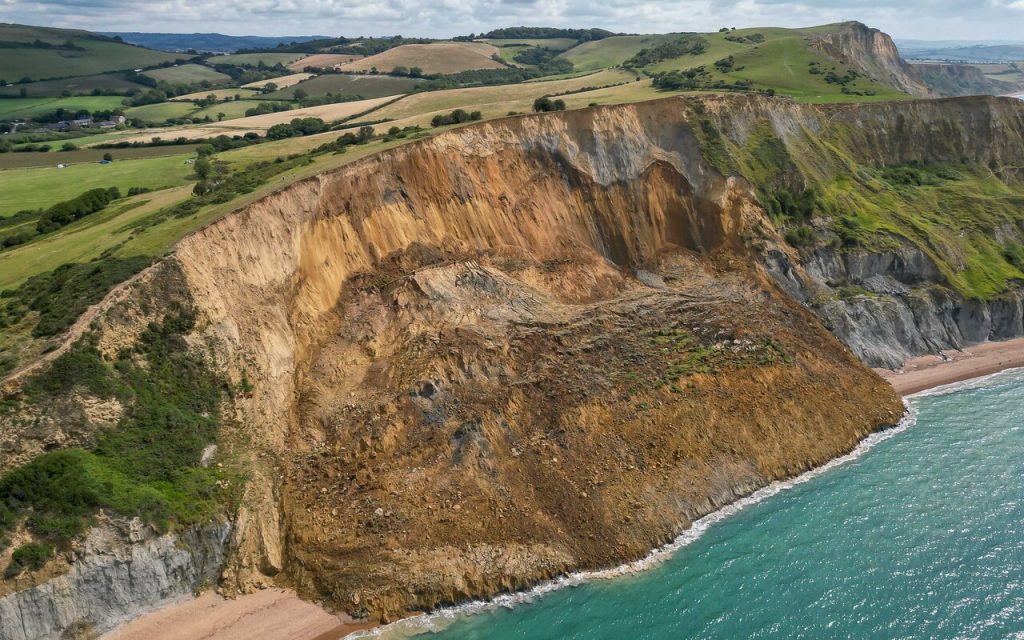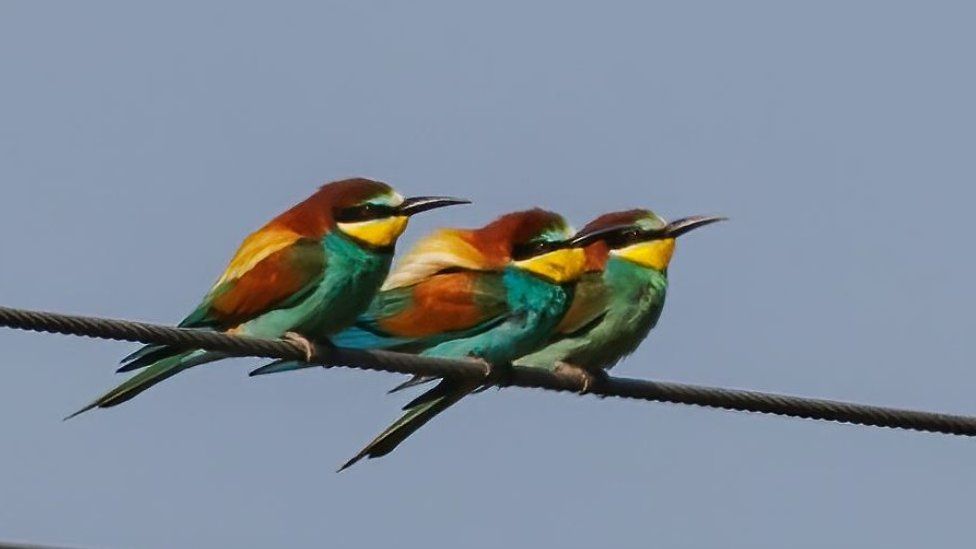I’ve remarked from time to time how the BBC series Springwatch (and its other seasonal offshoots) has learned to treat bad-anthropogenic-climate-change as the default explanation for every apparent change in Britain’s natural world, being obligatorily appended to any more scientific explanation that may be to hand. Hence the recurrent phrase, “Apart from the usual causes, like loss of habitat and climate change…”
Back in 2020, just before COVID temporarily eclipsed climate as the universal acid, I wrote a piece on how taking a theory on board frequently becomes not only a useful explanatory tool, but a way to construct one’s entire view of reality. It’s the classic case of the man with a hammer seeing everything as a nail. And so in particular Darwinian evolutionary theory can be made to explain any biological event whatsoever, including direct opposites, making it more of a universal myth than a scientific theory.
In the case of climate change, the fact that there has been no significant change in UK temperatures for 20 years makes no difference to the pronouncements of doom both for declines, increases and, in all likelihood, stasis in any particular population, even when the time-scale of the change is over just a year or two. I’ll come to a detailed example from (if I remember aright) the very last show of the present series of Springwatch in a minute, after briefly mentioning another instance from the same programme.
This episode featured a botanist whose job is to conserve very rare plant species in Wales, which seems a worthwhile pursuit, particularly if society is now committed to abandoning natural selection in favour of a Genesis 1 model of human stewardship, which is laudable. One very rare tree (I believe with only tens of examples in the world) apparently grows quite close to the marine waterline in Wales, and is being cultivated, the botanist said, to compensate for sea-level rise.
Now it may be that the few existing trees happen to be right at the water’s edge and genuinely threatened, and there is no doubt that since the ice age the southern half of Britain has been sinking slowly, which is largely why events like this (from earlier in the week) happen on our stretch of coast.

But I had the impression, from the careworn way he described things, that his motivation is actually the fear of impending apocalyptic worldwide flooding from global warming, first popularised by Paul Ehrlich and entirely divorced from reality, as the situation in the poster-child Maldives shows. If I’m right in that surmise, a top-level global theory such as climate change with catastrophic sea-level rise gets taught as fact to downstream specialists like botanists, doing Kuhn’s “normal science” under the assumptions of that theory, which they never question or test.
Certainly I get the impression that the Springwatch presenters have not actually researched the science, but see “climate change” as a “scientific consensus” term to get into every script, like saying “biodiversity” where “lots of species” would do, or “adaptation” for every anatomical feature or behaviour. Which brings me to the immigrant crisis, involving the spectacular bee-eater.
Bee eaters usually migrate between Africa and southern Europe and western Asia, but have always been occasional summer visitors to Southern England and (according to my trusty 1966 Collins guide) rarely farther north. But last year seven birds appeared in Norfolk, significantly further north than the usual sightings, and what is more they bred successfully. That in itself would be notable, but this year three birds returned, or at least, three appeared, and after one failed nest, apparently predated by stoats, a pair are apparently raising another clutch.
Now, there has definitely been a change in their nesting behaviour in the UK, as there have apparently been seven breeding attempts in the last twenty years – which you will note is the period during which Britain has been at its present higher summer average temperatures. And it has to be good news for bird-lovers to be able to see such living jewels, provided that they don’t become so successful that they get blamed for the decline in bee-numbers, as they have, it seems wrongly, by southern European apiarists.
But after this good news story, Chris Packham felt obliged to add that we must not forget that these birds are “climate refugees,” and that we would have to watch that their success here is not a a sign of decline elsewhere. And so a pleasant nature story becomes fed into the climate anxiety schema, and the free beauty of bee-eaters must remind us that they are a problem. (Though I must add their beauty is not free, as visitors are being charged a fiver to see them!)
But as I look into things I find that there seems no scientific substance to the gloomy warning at all. There seems no reason to doubt that temperatures are warmer here than they were in the little ice age from which we have so recently emerged, and that this is a major reason for increased attempts at breeding by migrant bee-eaters. But nobody was counting them in the mediaeval warm period, so who knows how many there were then, or in Roman times when, as I often point out, Dalmatian pelicans were the commonest food-bird on the Somerset levels? Even so, before you get too excited you might be interested to read that plumb in the middle of the little ice age, in 1793, also in Norfolk, twenty were seen, and one shot, in June, and the same small flock was seen in October (J. E. Smith, Transactions of the Linnean Society 3: 333; Latham, 1801; Fleming, 1828; Jenyns, 1835; Yarrell, 1845; Gurney, 1876; Yarrell, 1871-85; Gurney, 1884, 1921; Riviere, 1930).
It’s not as if their breeding is solely the result of climate change. My Collins guide points out that they bred successfully in Sussex in good old pre-apocalypse 1955, when London saw its last May snowfall of the century, and June was “cool and dull,” with a record June low of -5.6C recorded in Scotland. July and August were certainly warm that year, no doubt explaining the nesting success, but July also saw a British record for daily rainfall in Martinstown, Dorset (source).
The usual reason given for bee-eaters making it to Britain is said to be “migratory overshoot,” and that could presumably be due to anything from comfortable temperatures to stronger south winds. But to start talking about “climate refugees” when you have half a dozen individuals arriving in a dinghy two years running is scarcely rational, unless you can also show that things are getting bad down south.
And that is manifestly not the case. Birdlife.org informs us that:
This species has an extremely large range, and hence does not approach the thresholds for Vulnerable under the range size criterion (Extent of Occurrence <20,000 km2 combined with a declining or fluctuating range size, habitat extent/quality, or population size and a small number of locations or severe fragmentation). The population trend appears to be stable, and therefore is not thought to approach the thresholds for Vulnerable under the population trend criterion (>30% decline over ten years or three generations). The population size is extremely large, and hence does not approach the thresholds for Vulnerable under the population size criterion (<10,000 mature individuals with a continuing decline estimated to be >10% in ten years or three generations, or with a specified population structure). For these reasons the species is evaluated as Least Concern.
Population size: 14,000,000-25,999,999
So there are between fourteen and twenty-six million bee eaters breeding happily in Asia and southern Europe as they always have, and the fact that we have one pair and one spare – if the stoats don’t take a second snack – is supposed to be evidence of a global climate crisis.
Colour me unimpressed.

